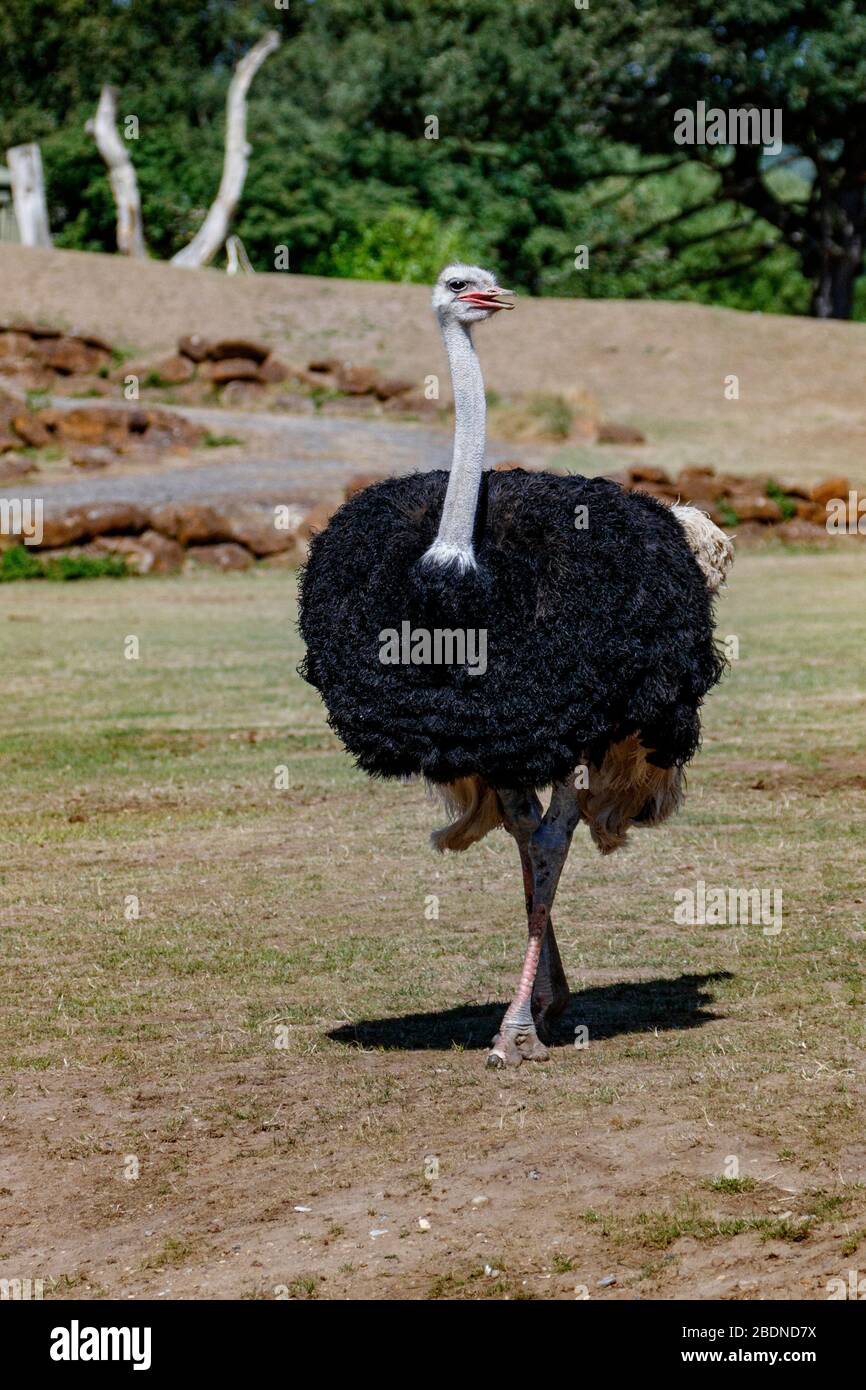
These birds, the largest on earth, have had long and intimate associations with humans. Nancy and I soon learned that we were far from the first humans to raise ostriches or even to incubate the eggs ourselves. This scenario seemed appropriate, since my research interest lay in ostrich breeding strategies. They followed her everywhere, emitting tremulous, mournful cries when left alone. The precocial chicks, each about the size of a barnyard hen, proceeded to imprint on Nancy, the first living being they saw after hatching. Three weeks later, six healthy young hatched in the incubator. Nancy, my wife and co-worker, who was recovering from surgery, agreed to brood the grapefruit-sized eggs in her bed while I constructed an incubator. I had made a trip into the bush outside Nairobi and with official permission had gathered six ostrich eggs, intending to hatch and raise the young in captivity. MY OSTRICH RESEARCH in Kenya began some sixteen years ago, very much as a family affair. We have some useful tips for tourists and then start planning your trip with our introduction to South Africa.The big bird practices communal child care andĮven kills lions in defense of newly hatched chicks.

Ostriches can live to be 30 to 40 years old.

#Ostrich predators full
By the time they are a year old ostriches will reach their full height. Hatchlings are fawn in colour with dark brown spots and a 'cape' of down on the back.

Those that do are fully developed when hatched. The incubation period is six weeks.ĭespite the constant watch of the male and female, less than 10 percent of the eggs will hatch. Other females may lay eggs in this same nest, but only the male and lead female will guard and incubate the eggs. The lead female then lays up to 12 eggs over the next 3 weeks. The male will make several shallow scrapes in his territory. Alpha males maintain these herds and mate with the group's lead hen. They live in small herds that typically contain less than a dozen birds. Shoots, leaves, flowers and seeds make up most of their diet but they will also eat insects, lizards and other creatures available in their often harsh habitat. They can also be found at the Rietvlei Nature Reserve between Pretoria and Johannesburg, Spitskop Nature Reserve just outside Upington in the Northern Cape, and the Groenkloof Nature Reserve in Pretoria, as well as throughout the whole of the Karoo. Oudtshoorn is home to the world's largest ostrich population and a number of specialized ostrich breeding farms. In South Africa, you will see plenty of Ostriches in Oudtshoorn in the Western Cape.

Natural distribution is in the drier regions of Africa, including southern Africa, Sudan, Kenya and Tanzania. Height: They can reach a height of 1.6 m. Ostriches have great vision and because of their strong legs can run at 70 km per hour. Ostrich have long necks, small heads, large eyes, long, powerful legs, and two toes on each foot.
#Ostrich predators skin
This skin is blue or pink in males and pinkish grey in females. Both males and females have bare necks and thighs. Its eye measures almost 5cm across.įemales and young ostriches have brown feathers instead of black to camouflage them. Did you know? The ostrich has the largest eye of any land animal. The male ostrich has soft black feathers on its back with white primary feathers on its wings and tail, making him easy to spot. When fully grown it can reach a height of 1.6 metres and weighs over 130 kilograms. The ostrich is a large, flightless bird - the largest living bird on earth.


 0 kommentar(er)
0 kommentar(er)
